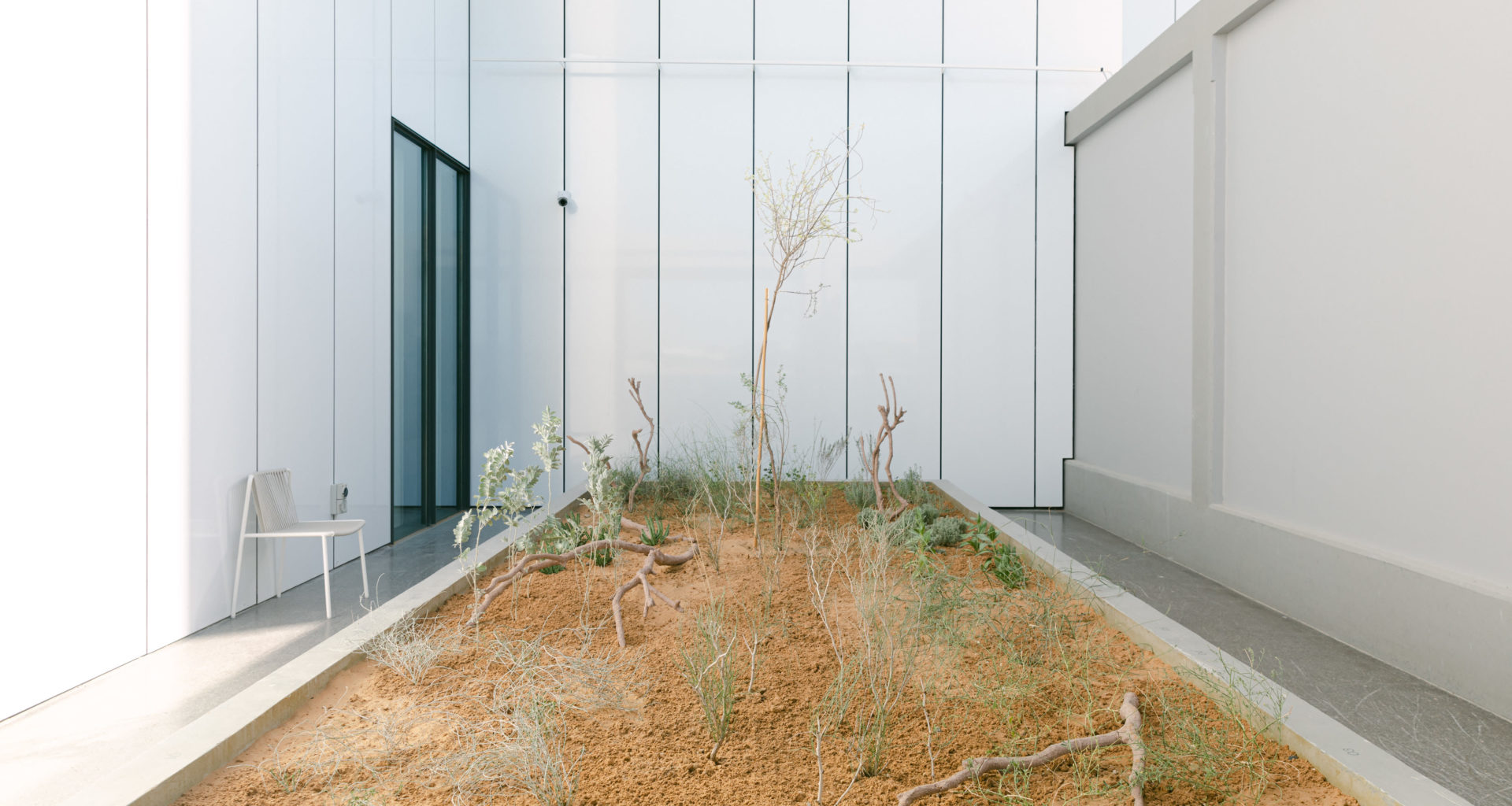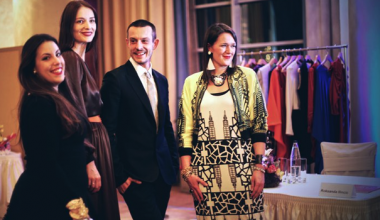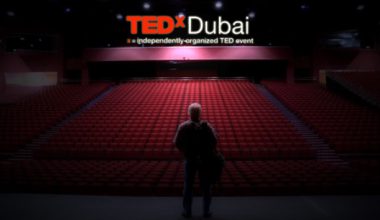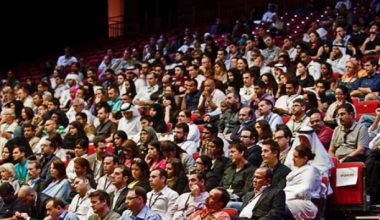The plant species grown in the Artist’s Garden are indigenous to the UAE and tell the story of their traditional uses as food and medication, offering a means to explore local plant ecology and nutritional habits.
Desert is a Garden is the third Artist’s commission at Jameel Arts Centre by Sunoj D and Namrata Neog. The intervention begins with the prompt of how to “think like a forest.” Their work explores the negotiations, hierarchies, and relationships of the biodiverse UAE landscape. They examine the interconnectedness of the goat, the human, the plant, and the natural deposits.
Exploring the complexities of biodiversity and human interaction with the environment, projects like Desert is a Garden delve into the intricate relationships that define the UAE landscape. Just as artists Sunoj D and Namrata Neog ponder how to "think like a forest," landscape designers at Sugar Green Landscaping embrace a similar philosophy. With their expertise in harnessing the natural beauty and resources of a region, they artfully craft outdoor spaces that honor the delicate balance between human intervention and nature's innate rhythms.
By considering the interconnectedness of elements like plants, animals, and geological features, they create landscapes that not only captivate the eye but also invite contemplation and dialogue about our relationship with the environment.
We were able to speak to Sunoj D (a contemporary artist) and Namrata Neog (trained in history, archaeology, and anthropology) to find out more about this commission.
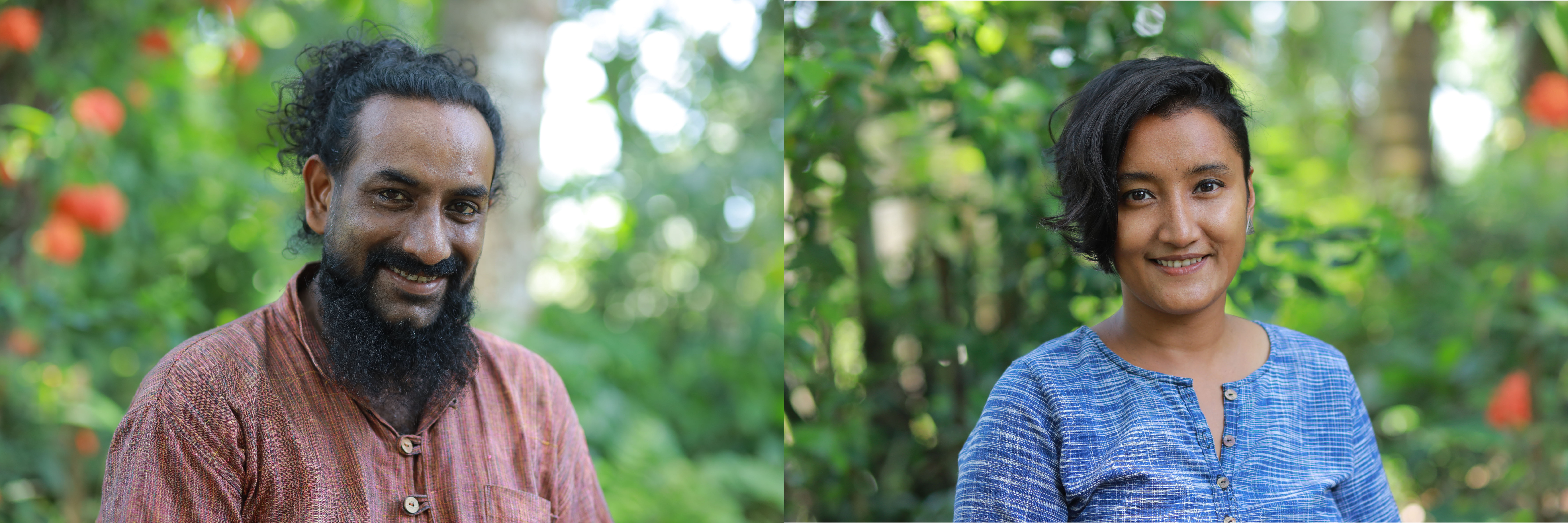
Saira Malik: Let’s first begin with an introduction to your interdisciplinary space, Lakshmi Nivas in India and the crux of your practice there?
Sanoj D and Namrata Neog: Lakshmi Nivas as a space or as a philosophy asks a simple question – how to think like a ‘forest’? What does it mean to think like a ‘forest’? The crux of this philosophy or our practice comes from the point of looking at and understanding relationships between the human and the non–human in the landscape. This relationship or the entanglement in the landscape is the ‘forest.’ A ‘forest’ is not just a tangible/visible/aural entity, it is these entanglements between humans and non–humans, where there is a conscious understanding of a thinking and a self–representational non-human being, who is also perceiving or seeing the landscape and is entangled with us in some way or the other. There is complexity and politics in that relationship and this foray into different ways human societies function or imagine. It is about relooking at the human in the landscape by quintessentially asking simple questions – why do we plant a tree? Why do we domesticate a goat in our homes? and so on…
S.M.: How did the two of you embark on working together and the synergy between both of you despite different artistic and educational backgrounds?
S.D. & N.N.: We started working together with the inception of Lakshmi Nivas in Kerala India. For us it never occurred to us that we came from different backgrounds. Rather Lakshmi Nivas was a merging point for our practices which comes from similar curiosities or questions. Our everyday life is Lakshmi Nivas and Lakshmi Nivas is our practice/work.
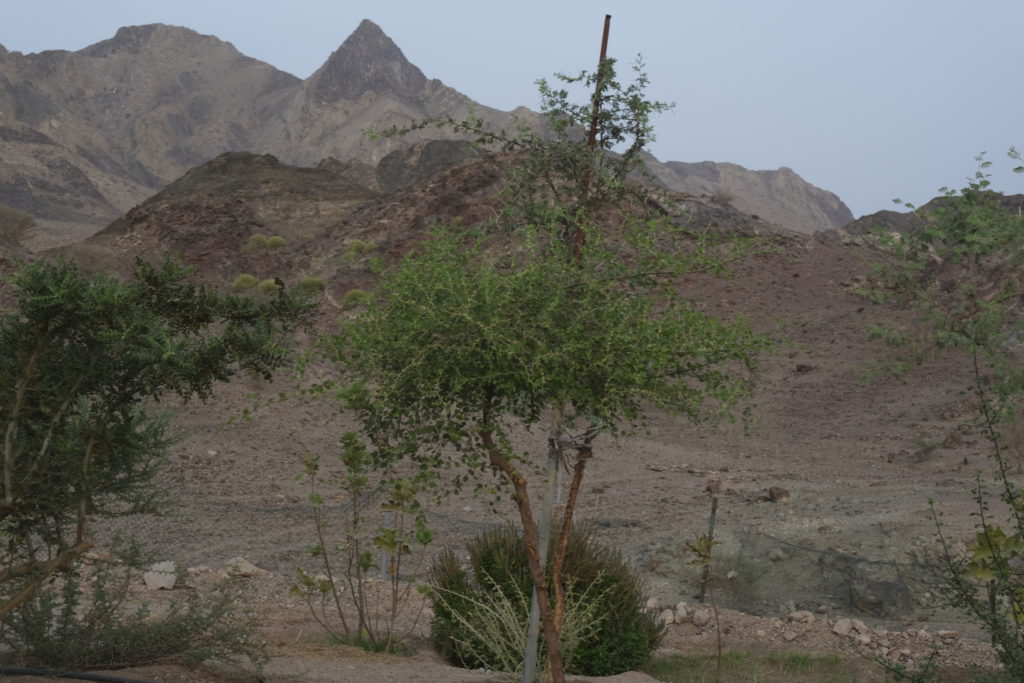
S.M.: Can you speak more about how you use the environment as your medium and how the idea for this project for Art Jameel came about and how it will eventually evolve?
S.D. & N.N.: For us the question is – how do you see a landscape? What would happen if we forget our baggage of history or memories or knowledge or perceptions, will the landscape feel the same? These curiosities are part of our everyday life and hence Desert is a Forest as a philosophy and as a project is not a separate conceptualisation. It is a natural organic extension of our everyday life and practice. We want to see the landscape as an entanglement of complex relationships and that we are not the only ones negotiating it. This project is inspired by the relationship between the human and the non–human in a landscape, especially in the UAE and because there is complexity and politics in that, we want to ask how does a desert think like a ‘forest’?
Every landscape is entangled either for food, competition, or comradeship, and hence Desert is a Forest as a project is curious to understand the politics of domestication and food between goats, humans, plants, and minerals in the UAE. The goat is important in this perception because it is one of the first non–human [entities] that humans domesticated or vice versa. All the plants sourced in the garden are indigenous to the UAE and are/were consumed by humans and goats, and questions how in a contemporary world a lot of the plants once consumed by the people of the UAE are either forgotten or lost. Another important element in the garden are the mineral sculptures which try to imitate a naturally occurring space with mineral deposits either as pools of water or stone surfaces or water runoffs. These spaces draw humans, goats, and plants alike to satiate the requisite mineral needs of each. In contemporary goat farms, a lot of farmers reproduce this in the form of factory processed mineral blocks whereby goats can lick to satiate any mineral deficiency as they do not have any more access to these mineral deposits. This is crucial for the farmer as the economy depends on the well-being of the goats.
Eventually the desire is to see the plants grow over the seasons in its time at Jameel and how in each season, changes have meaning either to the plant itself or the viewer or the goat. The project will also evolve over time. We are envisioning a collaborative book which delves into these concepts, as well as a collaboration with a chef to perform in the space.
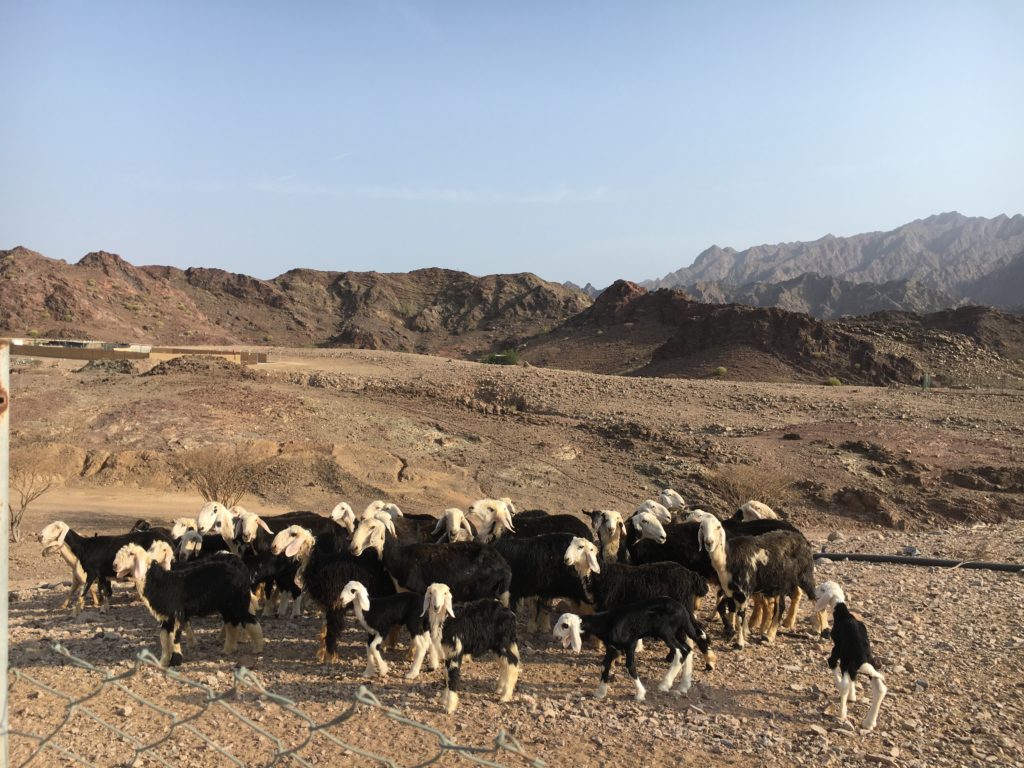
S.M.: How would you describe this work and the subject it explores?
S.D. & N.N.: The philosophy or the different concepts behind this work opens up a whole world of questions, not just for us but to wider human societies. In that way this work opens up multiple interpretations. The beauty behind the garden/project is that it is constantly evolving. It's like a landscape and every time you see that it has changed to something else which does something to the perceiver. Each plant in the garden will respond and grow over the coming seasons and in each season something will transform – some will flower, some will fruit, some might be taking a break or shedding. And in each season, its changes have meanings to itself and to either a human or a goat. We might be waiting for the end of April, because Arta will burst into red flowers and it is the time when bees come, from where honey will eventually come to our plates. Or a goat might also be waiting for the end of April to eat the young flowers of Arta.
Each plant in the garden is entangled with us, the goat and the mineral and we are entangled with each plant, the goat and the mineral. That is the prime subject behind the garden and within that a vast politics emerges – politics of domestication, politics of food, and politics of seeing.
S.M.: What inspired you to cultivate and experiment in this site-specific installation?
S.D. & N.N.: The goat!! The goat is our botanist and the landscape. When we go with our goats for grazing every day, one spends long hours seeing the plants they eat. The diversity is astonishingly staggering that one often wonders what if a goat were to document each plant they ate like a British colonial documenter- imagine that landscape and worldview. One starts seeing the landscape again and all these thinking and self-representational non-human beings populate the landscape with humans. That is when a strange polity emerges between humans and non-humans and this politics speaks volumes about human societies in the past and human societies today. In this one fundamental question emerges – who is this human in the landscape?
So these kinds of curiosities and inquisitions were the base of our inspiration, which went into the conceptualization of the garden at Jameel Arts Centre.

S.M.: Tell us more about the journey and processes involved in producing this work and how you approached it together as a team?
S.D. & N.N.: The initial research process was finding out different indigenous plants of the UAE eaten by goats and humans from different regions. Most of the plants are forgotten, growing as weeds or have disappeared due to overgrazing and some proliferated also as goat farmers started planting them in large scales as fodder. Slowly the process became ethnographic in nature as the search for plants took us to different goat farmers/pastoralists, local Emiratis and honey farmers in different parts of UAE like Hatta, Fujairah, outskirts of Sharjah and so on. We started documenting these plants, the goats and the oral narratives/memories of this knowledge of how these plants were/are eaten by humans.
We were amazed by the staggering diversity of plants that were consumed in different ways throughout history by humans in the UAE, and a lot of this knowledge is slowly fading. Goats on the other hand proliferated in big numbers across the UAE as goat farms increased and maybe wild indigenous goat grazing in the mountains is not there anymore. Apart from that, opinions and insights from different experts like ethnobotanists, soil scientists, and indigenous plant conservationists from the UAE were very fundamental in the process. The research is still ongoing as we intend to collaborate with a chef to study this oral folklore of different recipes of the plants sourced to the garden and experiment with this knowledge to create a culinary experience. This is envisioned as a performance and hopefully we are planning to get goats to the garden as well!
It is just sheer delight to work with the team at Jameel throughout the whole process. In the research, connecting and reaching out to a diverse array of experts, local Emiratis, goat farmers, honey famers, and travelling to meet them to know more about the goats and plants. This process as a team is beautiful. And this was only possible because of the curiosity and passion the whole team had for this project and the openness to constant experimentation.
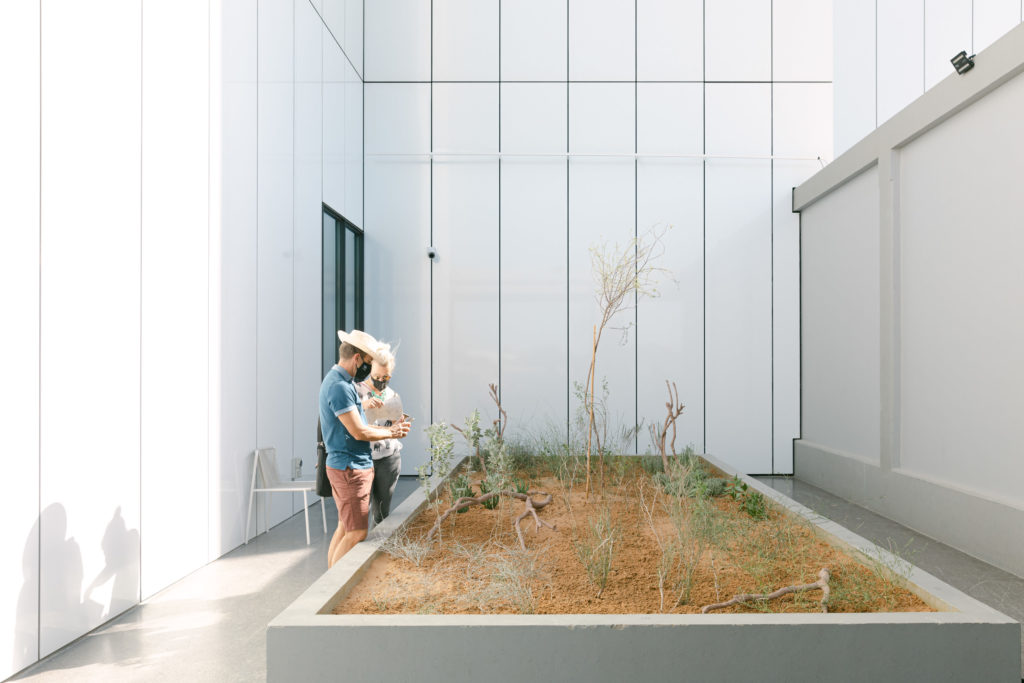
S.M: What were some of the challenges you encountered while working with these living plants and the local ecosystem?
S.D. & N.N.: Many of the plants which we wanted to source are from the mountainous regions of the UAE, which might not live through if planted in Dubai as they are part of a fragile ecosystem. Many of them are rare and many are seasonal, which means they would shoot up only after the rains in December or early January. Some of them had variant types. In that some variants have disappeared and some are scanty in its spread. There are also halophytic plants (plants resistant to salty soil) which were eaten by goats and humans, but it is very difficult to replant.
S.M.: What kind of reaction do you expect to incite from the Art Jameel audience and what you would like them to take away with them?
S.D. & N.N.: We want the audience to see the garden at Jameel Arts Centre not just with plants sourced from different regions of the UAE but rather as a space of reflections. If somebody becomes curious about any particular plant beyond its visual presence in the garden, for us that is enough- if somebody is roused by a surrounding stimulation, like why is the plant Arta important for me or the goat or the bee, or if somebody just wonders why do I need to think of mineral rock in the northwest of the UAE for my food, or so on. What we wish for them is to see through the layers in the garden and how these layers ultimately speak of complex relationships that involve us with the landscape.
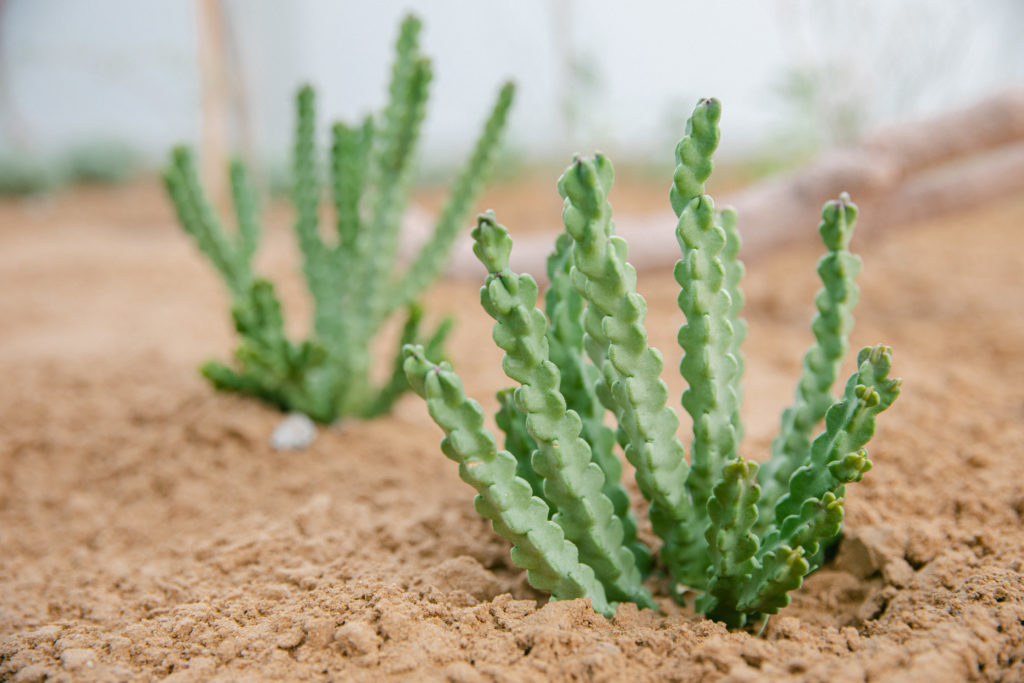
The garden is located at the Jameel Art Centre and is open to the public. The Artist’s Garden is accompanied by a program of talks, readings, and performances by the artists and their UAE-based collaborators.
For more information, click here.
Words by: Saira Malik
Images: Courtesy of Jameel Art Centre

